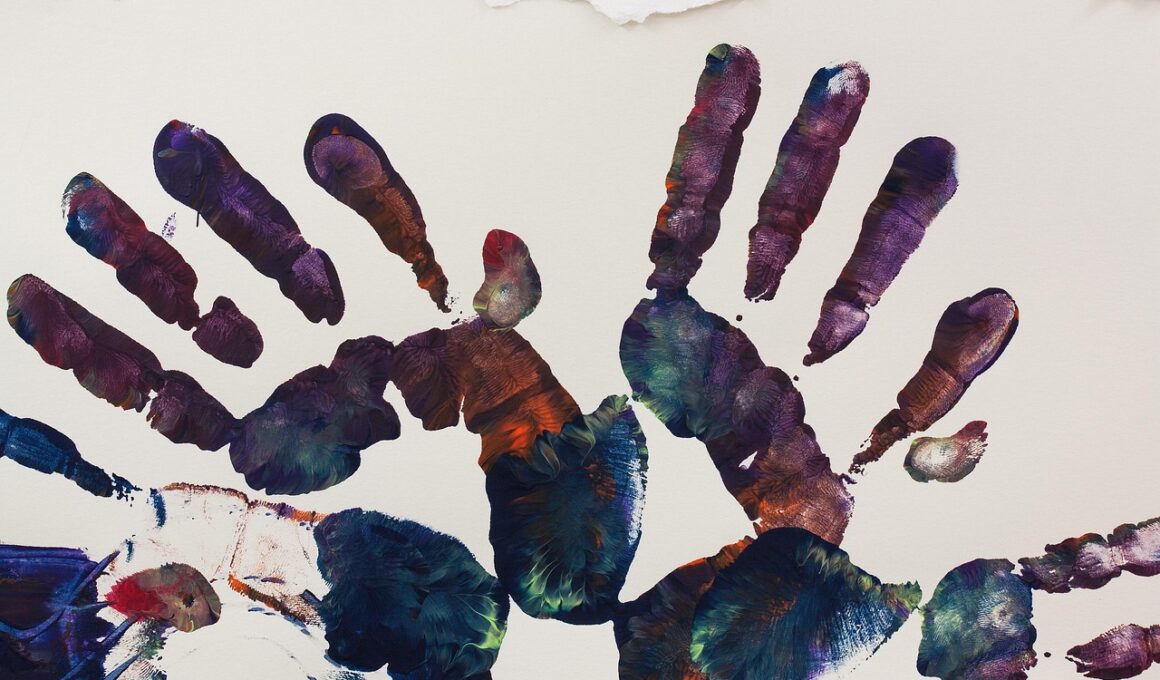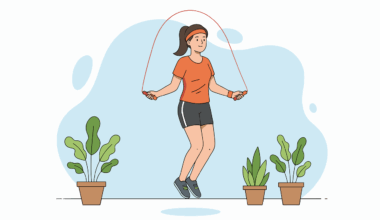Using Art Therapy to Strengthen Mind-Body Awareness
Art therapy is a powerful medium to enhance the mind-body connection, specifically by fostering resilience in individuals. This therapy encourages self-expression, allowing individuals to explore feelings and thoughts through artistic means. Engaging in creative practices such as painting, drawing, or sculpting helps individuals externalize their emotions, leading to a better understanding of their inner selves. Additionally, art therapy promotes mindfulness, serving as a tool to stay present in the moment while actively engaging with the creative process. The therapeutic relationship between the therapist and client can also play a significant role in building this resilience. By creating a safe space, clients can confront challenges and embrace their vulnerabilities, laying the groundwork for growth. Research demonstrates that the cognitive engagement involved in creating art can reduce anxiety levels and improve emotional regulation. Consequently, art therapy has shown promise to produce lasting impacts on both mental and emotional well-being. Moreover, by developing strong coping strategies through artistic exploration, participants can cultivate resilience that helps them handle life’s various stressors more effectively.
Another essential aspect of art therapy is its ability to enhance self-awareness. Through creative expression, individuals can discover hidden aspects of their personality and thoughts that may have been suppressed. By visually representing feelings, clients gain a clearer understanding of their emotions, facilitating discussions about these revelations with their therapists. This newfound awareness can act as a catalyst for personal growth, enabling individuals to recognize patterns in their behavior and emotional responses. With greater self-awareness comes an increased capacity to cope with stress and adversity. Furthermore, art therapy serves as a non-verbal language for those who may find it challenging to articulate their feelings verbally. This is especially important for children or individuals who have experienced trauma, as art allows them to express their experiences without the limitations of words. As participants engage in the creative process, they have the opportunity to release pent-up emotions, ultimately paving the way for healing. Collaboration between the therapist and the individual helps reinforce the positive aspects of this journey toward self-discovery and resilience.
Participating in art therapy can also create a unique community among participants. Group-based art therapy sessions foster interpersonal connections that build social resilience, which is crucial for mental well-being. Participants often share experiences and emotions relating to their art, resonating with one another’s struggles and triumphs. This shared experience cultivates trust, understanding, and empathy as group members create a support system for one another. Social bonds formed in these settings contribute significantly to developing resilience, as participants learn they are not alone in facing challenges. Additionally, group art therapy encourages collaboration, enabling individuals to learn from others’ perspectives. As they experience diverse art forms, clients may develop new coping strategies applicable to their lives. This collection of insights empowers participants to incorporate these strategies into their everyday experiences. As they continue to engage with art, they strengthen their connections with others and feel buoyed by a sense of belonging. Such communal aspects of art therapy emphasize the fundamental idea that resilience can be nurtured collectively through shared creativity and expression.
Art Therapy: Techniques and Benefits
The techniques utilized in art therapy vary significantly, offering numerous benefits to individuals. Each approach caters to diverse needs and preferences, ensuring a tailored experience for participants. Techniques may include journaling, collage-making, or using different mediums such as watercolor, charcoal, or clay. The act of creating with various materials stimulates different brain areas, fostering creativity and enhancing problem-solving abilities. Engaging in these activities helps individuals gain new insights and perspectives on their emotional circumstances, leading to personal breakthroughs. Moreover, the tactile experience of working with art materials can be grounding, helping individuals reconnect with their bodies and experiences. For many, this hands-on aspect alleviates feelings of anxiety, making it easier to confront emotional challenges. Keeping an art journal can also serve as a continuous reflection tool, documenting progress and emotional changes over time. As clients engage with their created pieces, they can notice evolutions in their thoughts and feelings, reinforcing their resilience as they navigate life’s changes and confront adversity effectively. Altogether, art therapy presents numerous techniques that encourage healing and self-discovery.
Incorporating mindfulness into art therapy provides additional layers of benefits. Mindfulness techniques focus on being present, an essential aspect of building mind-body awareness. Practicing mindfulness while engaging in art can significantly enhance the therapeutic experience, encouraging clients to immerse themselves fully in the creative process. This immersion allows them to step away from daily stressors, cultivating a sense of calm and focus. When artists become absorbed in their work, they often experience a state of flow, where time seems to stand still. This phenomenon positively influences mental well-being, fostering emotional balance and resilience. Additionally, clients learn to observe their thoughts and emotions without judgment, promoting self-acceptance and compassion. This acceptance further supports the development of emotional regulation skills. As clients apply these mindfulness principles to their art, they may begin to incorporate them into their everyday lives. Consequently, the lessons learned in art therapy sessions transition into practical coping strategies that individuals can utilize when facing future challenges. The integration of mindfulness enhances the benefits of art therapy, creating a multifaceted approach to growing resilience.
Measuring Progress in Art Therapy
Tracking progress in art therapy can be a valuable aspect of the therapeutic journey. By monitoring individual development, clients can gain motivation and insight into their progress, further enhancing their resilience. One effective method of tracking progress involves keeping a visual record of created artwork throughout therapy sessions. This evolving collection serves as a tangible representation of feelings, thoughts, and experiences encountered along the way. Additionally, therapists often use discussions surrounding these pieces to facilitate deeper conversations about emotions and personal growth. Assessing changes in artistic style or themes can reveal shifts in emotional states or aspects of resilience that have developed over time. Furthermore, art therapy evaluations can incorporate self-reported measures, allowing clients to articulate their feelings and perceptions regarding their growth. These assessments provide both clients and therapists with valuable information, reinforcing the ongoing nature of healing. Establishing goals and periodically reviewing them can also stimulate progress, motivating clients to reflect on their achievements, fostering resilience, and encouraging further growth. By measuring progress through various means, individuals embrace their artistic journey more fully.
In conclusion, art therapy is a powerful tool for strengthening mind-body awareness and building resilience. By engaging in creative practices, individuals can explore their emotions, enhance self-awareness, and connect with others. The therapeutic process allows clients to confront their vulnerabilities and redefine their coping strategies, ultimately fostering personal growth. Various techniques can facilitate healing, while mindfulness practices heighten the benefits of artistic expression. Group art therapy sessions contribute to building a supportive community, reinforcing the importance of social resilience in navigating adversity. Additionally, tracking progress in art therapy encourages individuals to recognize their achievements over time and continue striving for personal development. By embracing the tools and insights garnered through art therapy, individuals can cultivate the resilience necessary to thrive amidst life’s challenges. This approach not only enhances emotional and mental well-being but also empowers individuals to embrace their creative selves. Thus, art therapy offers a unique and enriching avenue for personal exploration and growth, solidifying its pivotal role in promoting a robust mind-body connection.
In summary, art therapy is essential in enhancing the mind-body connection. This powerful practice fosters resilience, self-expression, and deeper self-awareness by engaging individuals in creative activities. Through various techniques and mindfulness practices, participants can address emotional challenges while developing coping strategies. Furthermore, the communal aspect of group sessions nourishes social resilience, promoting a supportive environment for ever-evolving personal growth. As individuals track their progress and reflect on their artistic journeys, they build an invaluable foundation for resilience that will serve them throughout life. Ultimately, art therapy emerges as an instrumental pathway for personal development, enabling individuals to navigate adversities, express themselves authentically, and experience profound emotional healing. By fostering mind-body awareness through creativity, art therapy provides unique opportunities for individuals to discover their unique strengths and abilities. Embracing one’s creativity can significantly enhance mental and emotional well-being. As we continue to recognize the vital role of arts in therapeutic practices, it becomes essential to support those engaging in art therapy. Through investing time and resources, society can help individuals unlock their potential and cultivate a more resilient, connected future.


